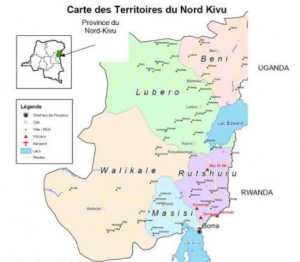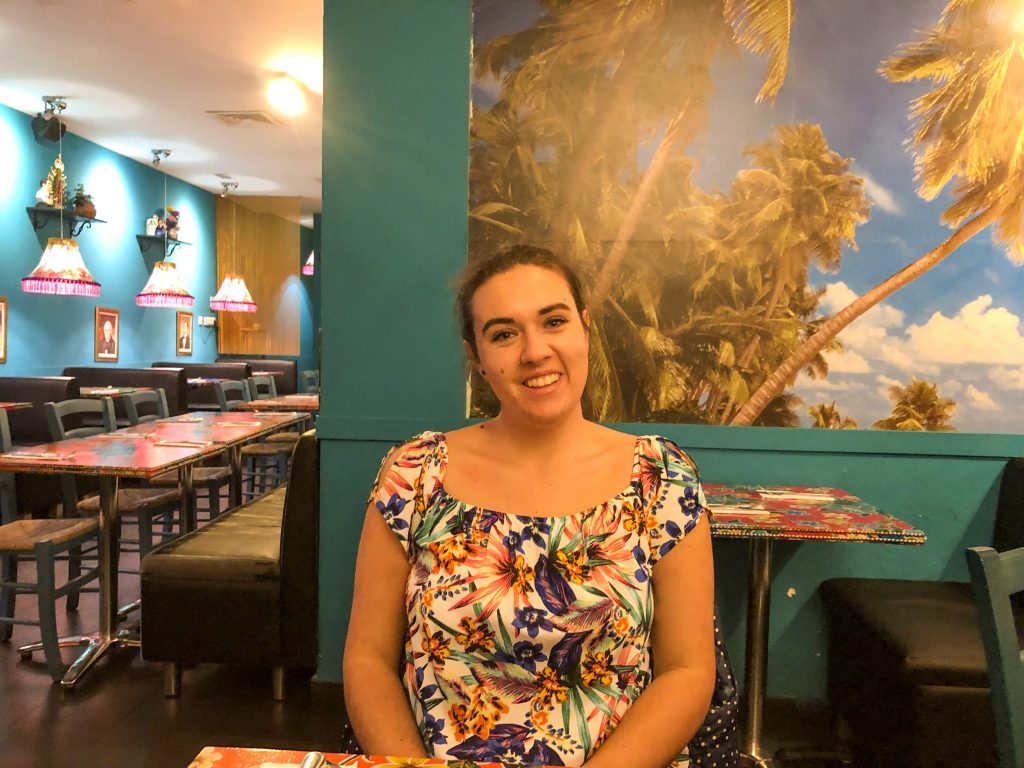
This blog post seeks to map the Nord-Kivu campaign, which lasted from October 2008 to March 2009 and ravaged an already war-torn Democratic Republic of Congo, according to Paul Wehr’s conflict mapping technique. However, this post will argue that complex conflicts such as in the case mentioned above are challenging to map due to their changing nature over time, which limits the potential of Wehr’s conflict mapping technique. Transformation is a common occurrence and can have significant effects on the resolution of any conflict but insofar, Wehr’s mapping technique does not account for this (Sandole, n.d.).
Summary
The Nord-Kivu campaign was one of a series of conflicts affecting the Congolese province of Kivu, an area located on the border between the Democratic Republic of Congo and Rwanda (Brunberg, 2013). The heavy fighting between the army of the Democratic Republic of with support from United Nations peacekeepers and a Tutsi-majority militia under the leadership of General Laurent Nkunda displaced two million civilians and created a ‘humanitarian crisis of catastrophic dimensions’ (Hrw.org, 2008).
Peace talks between the Congolese government and delegations from the FDLR and CNDP began in December 2008. Nkunda was arrested in January 2009 causing internal divisions and a subsequent split of the CNDP (News.bbc.co.uk, 2008). Although no official date for the resolution of the conflict is given, major fighting subsided by March 2009 leading to temporary peace in the province that had witnessed a continuous cycle of violence since the mid-20thcentury. However, the emergence of new actors in late 2009 paved the way for further despair in the Kivu province (IRIN, 2009).
Causes:
Nkunda’s militia had been present in Nord-Kivu since 2004, where they were accused of committing war crimes as a result of previous violent campaigns. His main aim was to protect the Tutsi minority, which had primarily settled in the Kivu province after the Rwandan genocide (Stearns, 2012: 10). In early 2008, Nkunda participated in peace talks with the Congolese government after he accused them of failing to provide adequate protection for Tutsi settlers, but the agreement would later breakdown and fighting resumed (Human Rights Watch, 2009).
Actors:
Primary –
- CNDP (National Council for the Defence of the People): armed group led by Laurent Nkunda, comprised of approximately 6,000 personnel, recruits from neighbouring Rwanda as a result of ethnic ties to the country (Pike, 2012)
- FDLR (Democratic Liberation Forces of Rwanda): comprised of mainly Hutu insurgents present in the Democratic Republic of Congo since 1994, considered to be one of the main ‘enemies’ of the CNDP (Amnesty.org, 2008)
- MONUC (United Nations Observer Mission in the Congo): peacekeeping mission with approximately 6,000 peacekeepers deployed in North Kivu, given a Chapter VII mandate, which permitted the mission to use all available resources, including force, to ‘protect civilians and humanitarian personnel under imminent threat of physical violence’ (ibid)
Secondary –
- Mai-Mai militia: initially perceived to be pro-government group, considered to be one of the main fighting forces against the CNDP despite its sporadic presence in the conflict (Buchanan, 2017)
- Government of the Democratic Republic of Congo: although not explicitly mentioned as an actor in the conflict, they supported the United Nations in their battle against the CNDP (Spittaels & Hilgert, 2008: 10)
Key Issues:
The strategic location of Kivu near the Rwandan border proved to be a recurring issue within the conflict. However, another underlying issue that is not always discussed when analysing this conflict is the phenomenon of Rwandan immigration into Kivu, which first began in the early 20thcentury when the Democratic Republic of Congo was under Belgian rule (Stearns, 2012: 17). Thousands of Rwandans were employed as labourers on farms owned by Belgian generals and signs of ethnic division were evident. The Belgians favoured Tutsi settlers and often marginalised the Hutus. However, nearly a century after the first settlers arrived, it is the Tutsi minority who feel marginalised against a Hutu majority in the area (Stearns, 2012: 21).
Wehr: a Critique
Mapping the Nord-Kivu campaign according to Paul Wehr’s technique has provided readers with a general overview of issues associated to the conflict. However, the map does not account for a deeper analysis of underlying causes nor does it account for key moments where the fighting could have subsided before increasing once again (Sandole, n.d.).
It is evident from the map that the Nord-Kivu campaign was a complex affair, but it is difficult to categorise actors as ‘primary’ or ‘secondary’ as one in particular was introduced into the conflict later than the others and then exited proceedings entirely. The actor in question here are the Mai-Mai militia. For purposes of Wehr’s conflict mapping technique they have been classified as secondary actors but in reality, they could be considered tertiary actors: those that played a role in the development of the conflict for a limited period of time (Buchanan, 2017). The Mai-Mai, in fact, initially supported Joseph Kabila, the president of the Democratic Republic of Congo, before turning their attention to waging a conflict of their own against United Nations peacekeepers who had ‘refused to provide them with food or money’ after an incident between the two actors in November 2008 (Ucdp.uu.se, 2018b). The militia group would sporadically appear in key battles in Nord-Kivu after the incident and were no longer directly involved in the aims of the primary actors associated with the conflict (Buchanan, 2017).
A further issue that arises with Wehr’s conflict mapping technique relates to the lack of attention towards conflict transformation. It is a known fact that the majority of conflicts, if not all, will change in one way or another as they progress: new actors may be introduced, new rationales for fighting will appear and the conflict may endure a geographical change (Woodhouse & Duffey, 2008: 81). Wehr’s static approach to conflict mapping limits the possibility of explaining why conflicts transform and what factors trigger the changes. Furthermore, how does one use a conflict map designed using Wehr’s technique to explain why violence breaks out after peace had been established? Relating back to Nord-Kivu, it is difficult to understand why the Mai-Mai sporadically appeared in key battles after November 2008 and it is furthermore unfathomable to understand the factors linked to the eruption of violence in Nord-Kivu in late 2009 despite a peace agreement between actors implemented months earlier (IRIN, 2009.
Regardless of the internal division of the CNDP following Laurent Nkunda’s arrest in 2009, peace would not be sustainable in the region. A significant challenge for any successor to the CNDP in the province would be to ensure that the Tutsi minority continued to be protected against any Hutu uprising (Wambua-Soi, 2017). The M23 (March 23 Movement) was formed by defectors from the Congolese army, most of whom had been part of the CNDP that had been allowed to integrate into the Congolese army (Ucdp.uu.se, 2018a). Although, theoretically-speaking, the Nord-Kivu campaign was over, the greater Kivu conflict that it had been a part of was not despite the group operating mostly in Nord-Kivu. This violent turn of events has, in fact, paved the way for a second round of the Nord-Kivu campaign (Stearns, 2012: 24).
Despite Wehr’s conflict mapping technique failing to account for conflict transformation or tertiary actors, who are not in fact interested in the resolution of said conflict but rather want to engage in the violence, an initial overview of a particular conflict is still valuable to conflict analysts (Sandole, n.d.). Furthermore, Wehr’s conflict mapping technique provides analysts with an idea of how actors are interlinked, in terms of their relationship with each other (Wehr, 2006). However, the mapping tool is basic and lacks substance. The Nord-Kivu campaign did transform despite its relatively short duration: actors disintegrated (the CNDP), relationships changed, and renewed fighting occurred (Brunberg, 2013).
Lastly, there needs to be a clearer definition of what is meant by a primary and secondary actor in terms of Wehr’s conflict map. In a two-sided, mostly interstate conflict, it is relatively simple to classify actors under these labels, but more complex affairs could see a switch of roles between primary and secondary actors (Woodhouse & Duffey, 2008: 84). How does one account for this role modification in Wehr’s conflict map? Relating back to the case study of this paper, conflict transformation caused actors in the Nord-Kivu campaign to modify their roles as violence increased and subsided over a period of just over five months (Spittaels & Hilgert, 2008: 27).
The United Nations peacekeeping unit, MONUC, had been granted permission to use force for humanitarian means. Although they were the actor most interested in conflict resolution, they would take on a lesser role in the Nord-Kivu campaign as peace talks commenced in December 2008 between the Congolese government and the CNDP (Edition.cnn.com, 2008). The peacekeeping unit is still present in the Kivu province albeit under a different name and revised mandate (Wambua-Soi, 2017). In order to outline the role transformation of MONUC, a new map would be needed, perhaps, as currently, we can only classify them as primary actors even though this role was not maintained throughout the conflict.
Conclusion
As this post has demonstrated in relation to the violent and ever-changing Nord-Kivu campaign, Paul Wehr’s conflict mapping technique is limited in the amount of information it can convey about a particular conflict.
The Hocker-Wilmot conflict assessment guide is one of the alternate mapping tools that can be employed. This particular guide is set out in a way in which there are various questions relating to power, tactics, nature of the conflict, attempted solutions and self-regulation and analysts would need to respond to all these using a conflict as a case study for mapping purposes (Spot.colorado.edu, n.d.). On one hand employing this technique to map out the Nord-Kivu campaign would have provided analysts with a significantly detailed overview of third parties, such as the Mai-Mai, as well as party strategies. Furthermore, scholars in the domain of conflict analysis have the opportunity, employing this particular mapping technique, to analyse party strategies and motivations for said parties to pursue a particular strategy in a given conflict (Sandole, n.d.).
For example, we know that Laurent Nkunda’s initial goal was to decrease the marginalisation of the Tutsi minority by engaging in conflict with opposition parties, but his tactics did change as the short-lived conflict progressed (Amnesty.org, 2008). One of the main causes of this tactical alteration was the battle to gain control of the government-stronghold town of Kiwanja. Nkunda won the battle but the losses to his army were devastating (ibid). Despite the inclusion of strategic analysis embedded into the Hocker-Wilmot conflict assessment guide, it does not explicitly take into consideration conflict transformation although this element could be woven into the answers of this questionnaire-style map.
Static, general maps such as in the style that mirrors the work of Paul Wehr may be useful to explain dynamics of relatively simple conflicts, but it is a known fact that simple conflicts, consisting of a handful of actors and with a clear resolution are not common. The changing nature of conflicts from interstate to intrastate limits the potential of Wehr’s mapping technique. Furthermore, the rise of non-state actors such as terrorist groups and other militia organisations have had significant effects on any attempt to foster peace between parties (Sandole, n.d.). The Nord-Kivu campaign began as a small-scale conflict between Laurent Nkunda’s CNDP and the government of the Democratic Republic of Congo but within a few weeks of the initial violence erupting, more issues arose, and more actors entered the fray (Spittaels & Hilgert, 2008: 31). It is necessary, therefore, for scholars to develop a mapping style that will take into consideration transformational elements but until that is created, Wehr’s map and the Hocker-Wilmot conflict assessment guide are good foundations for conflict analysis.

